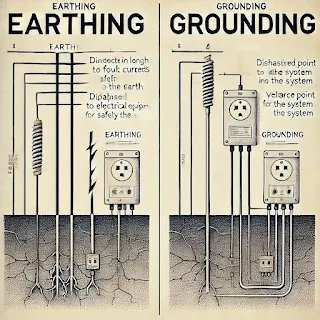Why
Electricity kill the humans:
because it disrupts the normal functioning of vital organs, particularly the heart, muscles, and nervous system. The severity of the effect depends on factors such as the current, duration of exposure, and the path electricity takes through the body. Here’s how electricity affects the body:
1. Interference with the Heart (Ventricular Fibrillation)
Electric shock
can disrupt the electrical signals that control the heartbeat, potentially causing ventricular fibrillation.
This is an irregular and often fatal heart rhythm that prevents the heart from pumping blood effectively, leading to cardiac arrest and death if untreated.
2.Muscle Contraction and Paralysis
- Electric current passing through muscles causes them to contract involuntarily. With higher currents, muscles may "lock up," making it impossible to let go of the source of the shock. This prolonged exposure increases the risk of severe injury or death.
- For high currents, muscles may contract so violently that they can cause broken bones or internal injuries.
3. Nervous System Damage
- The nervous system, which communicates using electrical impulses, can be severely disrupted by electric current. This interference can lead to loss of muscle control, paralysis, or even unconsciousness.
4. Burns and Tissue Damage
High-voltage electric shocks can cause severe burns at both the point of entry and exit, as well as along the path the current travels inside the body. This can lead to internal damage, organ failure, or death due to thermal injuries.
- Internal tissue damage may not always be visible immediately, but electric currents can destroy blood vessels, nerves, and organs.
5. Respiratory Arrest
If electricity passes through the chest, it can interfere with the diaphragm, which controls breathing. This may result in respiratory arrest stopping breathing, and leading to suffocation if not treated promptly.
Factors Affecting the Severity of Electric Shock:
Current (Amperage):
Even low currents (as low as 10 mA) can cause harmful effects. Currents above 100 mA can be fatal.
Voltage:
High voltage increases the likelihood of injury, but even household voltages (120V or 230V) can be lethal under the right conditions.
Path through the Body:
If the current passes through vital organs (e.g., from hand to hand or hand to foot), the risk of death increases.
Duration:
The longer the exposure to the current, the more severe the injury.
Resistance:
The body’s resistance (mainly skin) affects how much current flows through. Wet or damaged skin reduces resistance, allowing more current to pass.
Electricity is particularly dangerous because it can cause sudden, catastrophic effects in the body, often without much warning.









.jpeg)

.webp)

